I never thought crossing the Ecuador Peru border at night would be so problematic.
In South America, every traveller has heard about the danger of overnight border crossings – but you never quite believe it’s going to happen to you.
As budget backpackers, my friends and I were crossing the Ecuador Peru border while trying to get from Cuenca (Ecuador) to Lima (Peru) in the cheapest way possible. That meant a lot of bus travel, the prospect of hours spent waiting in transit at bus stations – and definitely some overnight bus journeys.
The debate between bus journeys during day versus night comes down to a few differences. A daytime bus journey means good views and safer conditions, but a night bus is usually cheaper, saves paying for a night of accommodation, and ultimately feels like you’re reaching your destination quicker. Moreover, night buses don’t make stops along their route for impromptu passengers, meaning you won’t get woken up multiple times.
But let’s not forget that when you’re travelling somewhere as exciting as South America, a part of you WANTS to do the hardcore adventurous things. You don’t want to catch a quick and easy flight; instead, you want the boast-worthy battle scars at a hostel over beers with new travel friends: “Yeah, we took a twenty four hour bus across Peru…probably misguided but it was hilarious!”
Planning our route from Ecuador to Peru
After living in Cuenca, Ecuador for four months, my friends and I were leaving our volunteering jobs for a few weeks and travelling to Peru so we could visit Machu Picchu. The stickler was we had a rather tight timeframe: only three weeks to get from Cuenca to Cusco and back again.
In that three week window, we wanted to spend a few days in Lima, take a bus from Lima to Cusco, spend a few days acclimatising in Cusco, embark on the four day Salcantay trek to Machu Picchu, and then head back to Ecuador via a few days of beach time in Mancora.
As a result, there was a delicate line to balance between – maximising our time but also sticking to a pretty minimal budget! Working backwards from the Salcantay trek dates that we’d already arranged, I realised that if we were doing this whole route on buses we’d need to book them ahead of time. But when I researched crossing the Ecuador Peru border in the daytime, I learned that lengthly delays were common. If we missed one bus connection, we missed them all; and most of us were on too tight a budget to be able to buy new tickets.
To avoid that possibility, we decided to leave Cuenca on a night bus, aiming to cross the border at 3am and reach Piura at around nine in the morning. We’d hang around Piura for twelve hours and then take a second night bus from Piura to Lima, arriving at midday the day after.
An overnight journey from Cuenca to Lima by bus
This is the journey from Cuenca to Lima which we’d mapped out for ourselves, booking every section of the route before we left Cuenca:
- 11pm: Board a bus in Cuenca, Ecuador to the border at Huaquillas (the Ecuador side) – journey time: 4 hours
- 3am: Cross the Aguas Verdes border – journey time: an hour minimum
- 4am: Re-board the same bus (now in Tumbes, Peru) and continue driving to Piura – journey time: 5 hours
- 9am: Arrive in Piura
- 9am to 11pm: Wait around in Piura until our connecting bus – wait time: 12 hours
- 11pm: Catch an Oltursa bus from Piura to Lima – journey time: 15 hours
- 12pm: Arrive in Lima
- 12pm onwards: Take a taxi to our pre-booked dorm room at 1900 Hostel — journey time: 30 mins
- 1pm: Check in at 1900 Hostel and gratefully collapse into our dorm beds
If it all went off without a hitch, we’d have travelled over 1,400kms in about 38 hours, at a cost of about $44 USD ($20 from Cuenca to Piura, then $24 from Piura to Lima).
But ‘without a hitch’ was one big if.
Booking a bus ticket in Cuenca
First off, we trekked to Cuenca’s Terminal Terrestre a few days before our trip and bought tickets for our group of eight. There are various companies who run this Cuenca to Piura route, including CIFA, Pullman Sucre, Azuay and Super Semeria. After a fair amount of haggling with different companies we chose CIFA as it best-fitted both our timings and our budget: our bus would leave Cuenca at 11pm and arrive in Piura at 9am the next morning.
In hindsight, choosing CIFA turned out to be a big mistake.
Driving from Cuenca to the Ecuador-Peru border crossing
The journey was pretty smooth to start with. We met at the Cuenca bus station at 11pm (buses in Cuenca can be seen here) and settled into the four hour ride to the border at Huaquillas, where border control officials investigated our bags and asked us off the bus to get our passports stamped.
We hopped off our bus in the pitch black of 3am, entered a bright white room which had just a handful of sleepy travellers queuing for passport stamps at the row of visa windows. One by one, we each took our open passports to the Ecuador officials, then to the Peru officials, with our blank passport pages stamped by each.
In no time, we were out of Ecuador and officially into Peru.
With so few people in the border control queue, it was easy to strike up conversation with the poor Dutch traveller who’d been robbed of his passport a few weeks ago and couldn’t afford a new visa.
It didn’t take our group long to pool our Ecuador dollars together and loan him the money he needed. After his profuse thanks and promises to refund us the cash online, we all clambered back onto our bus and settled down for a nap, with at least five hours to go before we arrived in Piura.
Or so we thought.
Problem #1: gangs of robbers roaming the Tumbes border crossing
I awoke, sweating, in the pitch black heat of a stationary bus. The air conditioning was off.
“What’s going on?” I whispered to Issy.
“There are robbers outside, apparently. We drove about a mile down the road then doubled back. We’ve been parked in here for at least an hour, I think…”
‘Here’ was a small car park in Tumbes, only a few miles away from the border we’d recently crossed so easily. It seemed that after we’d boarded the bus, our driver had heard reports of roaming robbers so decided to park the bus and wait it out. He hadn’t bothered telling his passengers: I guess we’d either all fallen asleep, or he simply didn’t think it was necessary.
The air grew thicker and more oppressive as I tried in vain to go back to sleep – and then the worst snores I have ever heard began erupting from the back seat.
Things were starting to look less than pleasant.
Hours later, as the dawn light began to creep around the edges of our curtains and passengers began to disembark to stretch their legs, we jumped off the bus to join them. But when we were greeted by the pitiful sight of other travellers sleeping on their backpacks on the ground, it became clear there was more going on than just a gang of robbers wandering through the cover of the Peruvian dark.
A quick bit of questioning revealed the truth.
“There’s a protest going on in Tumbes. The area has a lack of water or something – and some fishermen have built barricades across the roads so nothing can drive through…”
We joined the travellers and their backpacks, watching in horrified confusion as our bus driver pulled every bag from the undercarriage of his bus. Without uttering so much as a word to his would-be-passengers, he revved the engine and drove out of the car park – in the opposite direction to Piura.
Our bus was driving back to Ecuador without us.
We threw our own bags into the pile, sat outside a fetid block of toilets as our bus disappeared, and tried to work out what on earth what to do next.
Now, I want to preface this next section with the knowledge that Tumbes is renowned for scams designed to rip off travellers. The internet is full of stories about corrupt policemen, thieving taxi drivers, young bag-stealers and god knows what else.
I’d also like to point out that at the time of actually making this border crossing, neither I nor my friends knew anything about it.
Problem #2: how to cross the protestors’ border blockades?
It’s funny how quickly a sense of camaraderie develops in unexpected situations.
Within a half hour, we’d become friends with Kate from Washington, Fergus and Gloria from Wandsworth and Switzerland, a Chilean guy on route to visit his boyfriend in Lima and a crazed Frenchman with a bamboo cane who’d shouted down the entire bus staff in search of a refund on his ticket. And together, we’d come up with a plan.
After converting the few Ecuador dollars we had into Peruvian soles via a miserable-looking Money Exchange guy loitering in the parking lot, we threw our bags into a tiny bus which Fergus had found, and we were zooming off towards the first barricade together.
On arrival, however, the casual traffic jam we were presented with didn’t look like much. Groups of truck drivers stood near their vehicles, smoking and chatting with their car doors left swinging open. The Peruvian insurgency which I’d been expecting to see was actually a bit disappointing.
But as we started walking along the road, three army trucks rolled past us in silent succession. There were soldiers in riot gear avoiding eye contact – and I started wondering if something a tad more serious about to happen.
Things escalated rather quickly. One minute we were stepping gingerly over a rather large tree lying in the centre of the road, and the next we were almost mowed down by hordes of men running all around us. The police on the other side of the leafy barricade had started throwing tear gas!
With barely any time to pull our shirts over our faces, let alone for debate, we stuffed our sizeable group into a couple of minivans and drove off. The excitement was palpable and everyone’s smiles were wide; happily discussing our brush with the police as if the morning’s adventures were over.
We’d barely even begun.
Crossing the Ecuador Peru border. ON FOOT.
Our minivans turfed us out less than 2km down the road. Another blockade just ahead, they said, hands outstretched for payment.
With little choice, we started walking – to be faced with a much less dramatic fallen tree, and pockets of men standing idly against the road barriers. The vague concern that they might stop us from passing melted away as we got close; in fact, they hardly even looked at us.
The next hour or so passed in a blurry haze.
We walked along the Pan-American Highway, bags on backs, hounded at every step by rickshaw and minivan drivers barking prices and imagined distances; we eventually stopped, bargained for fares, loaded our bags onto roofs and clambered into vehicles for all of five minutes, before halting at some kind of rudimentary blockage in the road.
We got out of said vehicles, reluctantly paid, skirted the road blockage – and were then forced to repeat the whole process over again.
After passing through six different barricades of various shoddiness and lack of effort, groups of men lying at the sides of the road, phones blaring tinny pop music, all smiles and lazy easiness, the truth finally dawned.
This entire situation was a complete invention.
Perhaps there was a fishermen’s strike, somewhere – one barricade had certainly involved fishing nets and a distinct aroma of rotting fish – but there was no way that one problem had extended the distance it had. Instead, the rickshaw and taxi and bus drivers were all working together; preying on the helpless pedestrians at the sides of the road who had absolutely no option but to accept the ‘kind’ offers for a extortionately priced lift.
Gringos and Peruvians alike.
The hot sun burned down, and our tempers grew hotter
That’s when I started getting really angry at the situation; as I watched mothers clasping the hands of eight year old boys, wandering down the Pan-American Highway in the shimmering heat with no knowledge of how much further they had to walk.
Eventually we started to realise just how much trouble we could be in. Our gaggle of travellers numbered at least fourteen or fifteen people; constantly arranging transport with wayward tuk-tuk drivers for that many was severely depleting our funds.
It came to a head when we stood at midday at the mercy of the midday sun, no shade for miles around, with vultures literally circling the skies above us, desperately bartering with a truck driver who wouldn’t take anything less than 10 soles a person to drive us to the next barricade. We simply didn’t have enough money to cover the cost of all of us – but there was simply no way we could keep walking. Not with only two litres of water left between fifteen people and no way of knowing how much further we’d have to go.
And even when we begged, pleaded, explained in tired and sweaty Spanish that we simply weren’t able to pay? There was no change behind his dull eyes. He was going to make us pay through the nose.
Buying our way onto a minibus to Mancora
Travel karma to the rescue! Remember how we’d loaned various dollars to a guy we’d never met at passport control? Well, it felt like that good deed had given us a hefty dose of travel karma: one of the girls in our group didn’t hesitate to lend nine British strangers enough cash to get us to Mancora. Once we arrived in Mancora, we agreed that we’d pay her back.
From Mancora, we could catch a bus onward to Piura – hopefully getting there by 9pm for our night bus to Lima.
But there was a long way to go before we reached the haven that Mancora had rapidly become in our minds. Another slew of bargaining with drivers, journeying in a collection of different vehicles, and trudging along on our own feet.
After fifteen blockades, I had a change of perspective
Weirdly, walking for hours along the highway gave me a chance to think – and I knew things weren’t as bad as we first made out.
- We weren’t lacking money due to poverty. Instead, it was only having the wrong currency, and an underestimation of how much we’d need to bribe drivers with.
- We wouldn’t be lacking water for long. Although it felt like forever, we’d most likely reach ‘civilisation’ in a few hours or so. Similarly, we’d only been forced to walk because of a few trees in the road, and it would stop eventually.
- We still had our remaining bus tickets. We were easily going to get to Piura by the evening.
- It wasn’t forever. Things could definitely be worse.
Plus, there was a benefit to this whole dramatic situation: the fact that we were given one of the most absurd introductions to a country that I’ve ever experienced.
That, and the chance to see firsthand what it’s like to live on the coast of Peru; to watch the locals handle what is apparently quite a regular occurrence; and to feel incredibly grateful that walks like this, along the baking hot road and weighed down with all my possessions in multiple bags, isn’t my daily life.
A bus from Mancora to Piura – then onwards to Lima
When we finally rocked up in Mancora at 2pm, sweaty and exhausted, who should walk past but the Dutch guy we’d met at border control, who promptly handed over the cash we’d loaned him – which provided us with some much-needed Peruvian soles!
Thankfully, buses from Mancora to Piura were much less complicated to organise. It’s a journey of just three hours and the buses depart often enough (20+ times a day) that we could buy a ticket and leave with enough time to reach Piura in time to board our pre-booked 9pm bus. Success!
The Oltursa bus line in Peru is a thing of wonder (particularly after the day we’d had). They have reclinable seats! Air conditioning! Little blue curtains! And the best part: a man in uniform walking down the aisle giving us juice boxes and snacks! As I settled into the reclined 140′ degree angle and felt the engine start to vibrate, I couldn’t believe what the last day had been like. Moreover, I couldn’t believe that we were about to have 15 hours of uninterrupted journey time until we reached Lima.
But that’s exactly what happened. THANK GOD.
So after all that, was an overnight Ecuador Peru border crossing worth it?
It took us twenty-four hours of solid, sweaty effort to get ourselves from Cuenca to Piura, all totally unexpected: but then again, the journey we had initially anticipated wasn’t the memorable one it turned out to be.
So thanks, Peru. Within a day of leaving our beloved Ecuador, you managed to give a group of gringos an absolutely unforgettable impression of yourself.
This journey also provided us with some necessary practice in coping with the unexpected. Regardless of whether we knew it at the time, that Pan-American journey was a little taster of what Peru was planning to throw our way next…
Read more: runaway horses & broken bones on the Salcantay trek to Macchu Picchu
Have you ever had a border crossing which didn’t go to plan? Did your Ecuador Peru border crossing go better than mine did?!
– Bus from Cuenca, Ecuador to Piura, Peru (9 hours, 68 soles / $20). We booked directly at Cuenca’s Terminal Terrestre on Ave España with CIFA, who I don’t recommend thanks to their driver abandoning his passengers at the border when they’d paid for a further five hours of transport. Terminal Terrestre is also where the bus leaves from.
– Bus from Cuenca to Huaquillas (4 hours). Huaquillas is on the Ecuadorian side of the border.
– Passport control at Aguas Verdes border crossing: If you’re a UK citizen, the 90 day Peru visa is free on arrival. Check your own country’s visa policies for more info.
– Bus from the border to Tumbes (5 hours). Tumbes is 21 km from the Ecuador Peru border, and is the first town with that you’ll reach with ongoing transport. If you haven’t already booked a bus from the border or you’re not on an international route, you might have to take a pricy taxi from the border.
– Bus from Tumbes to Mancora (2 hours, 30 soles / $9). If you get stranded in Tumbes like we did, there are buses every few hours which go onwards to Mancora.
– Bus from Mancora to Piura (4 hours, 30 soles / $9). There are plenty of departures each day for this route, from a few different companies including Oltursa and Eppo. Board at Terminal Mancora.
– Bus from Piura to Lima: (15 hours, 81 soles / $24). We booked with Oltursa, a fantastic bus company which I highly recommend. Board at Terminal Terrestre de Piura on Av Bolognesi and arrive at Lima’s Gran Terminal.
(prices are in Peruvian soles and US dollars)

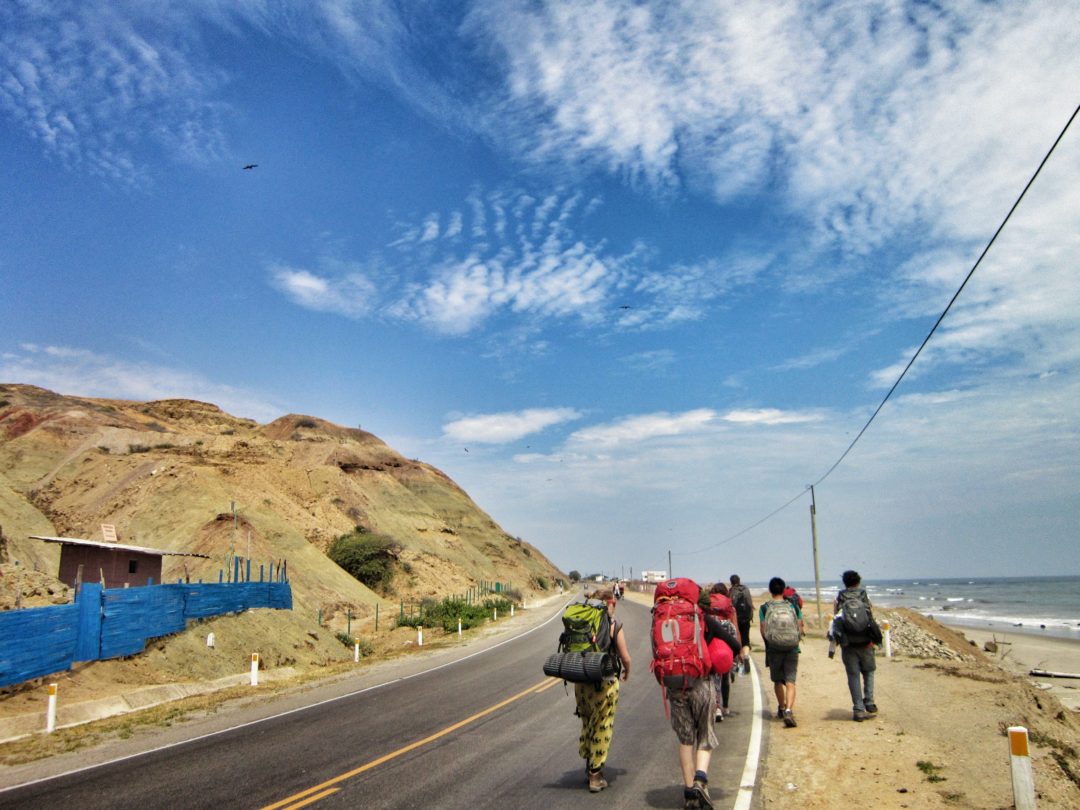
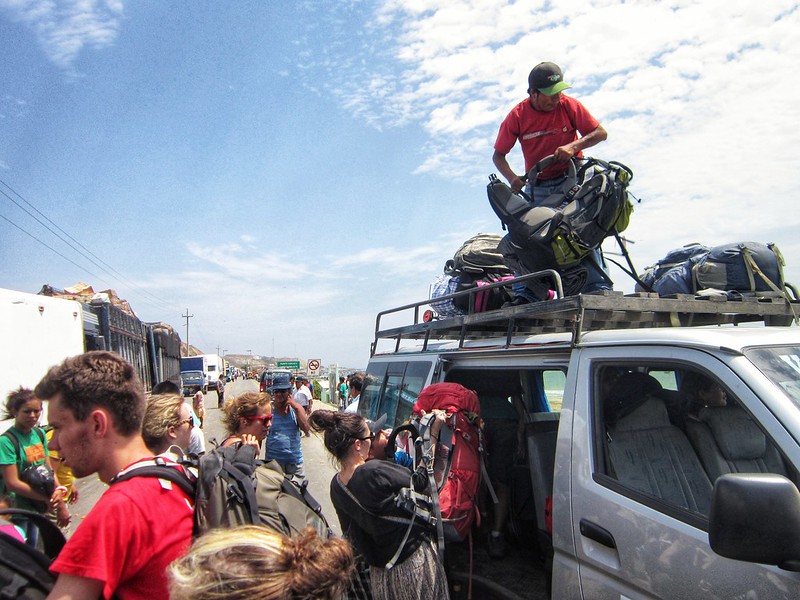
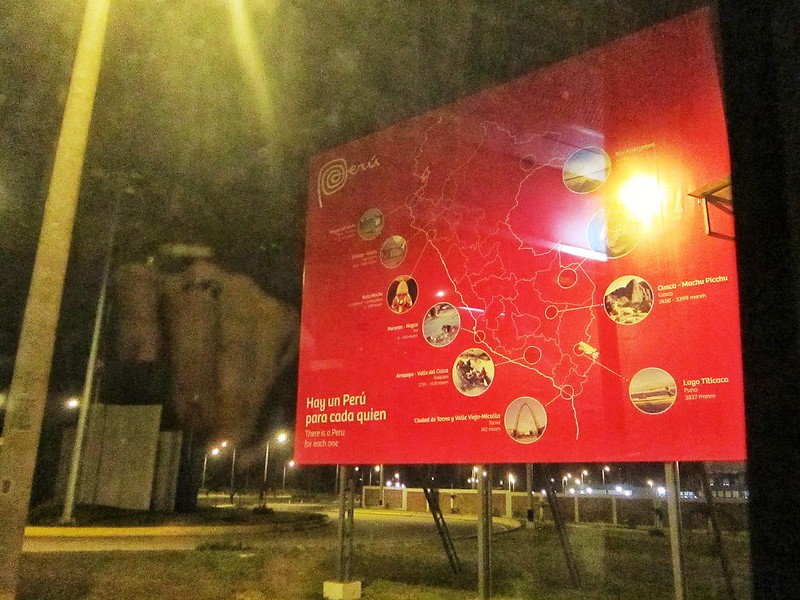
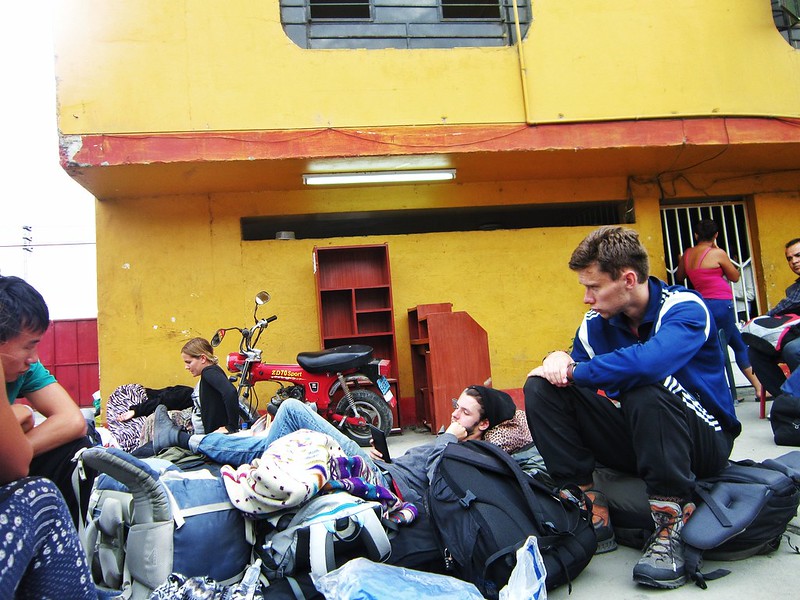

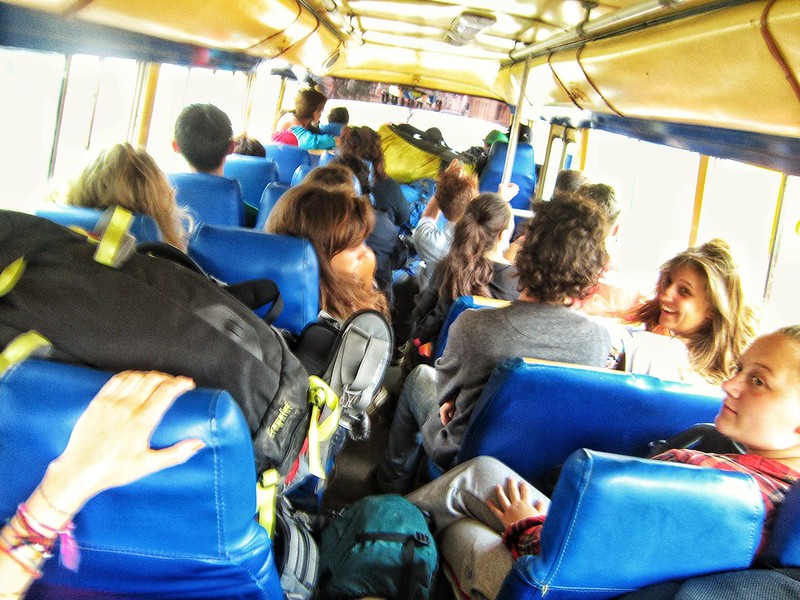
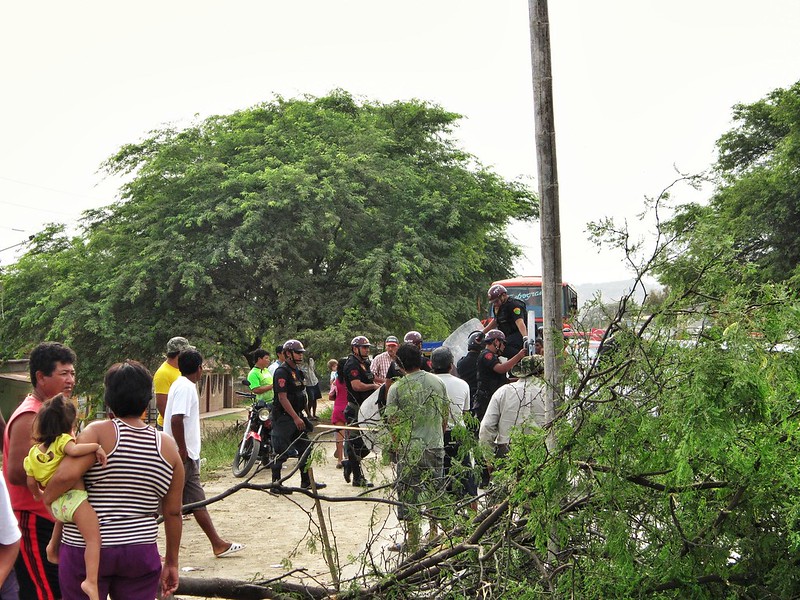
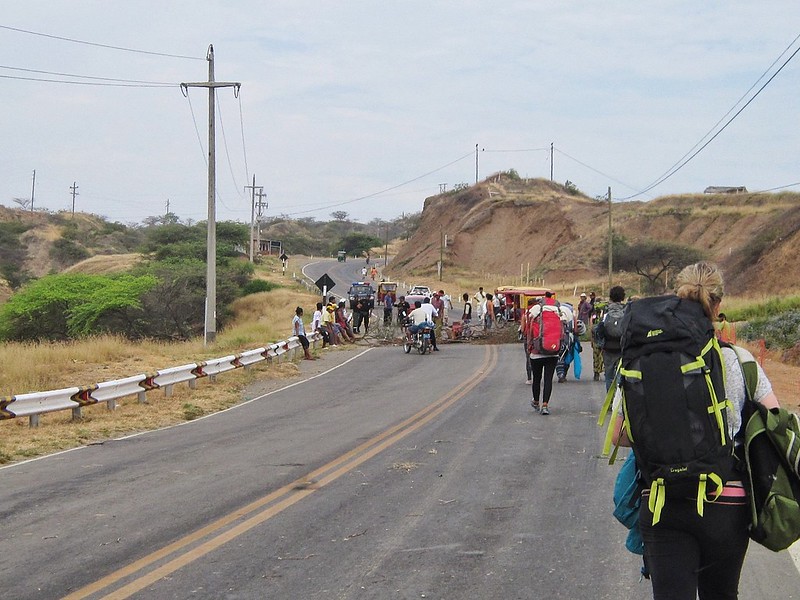
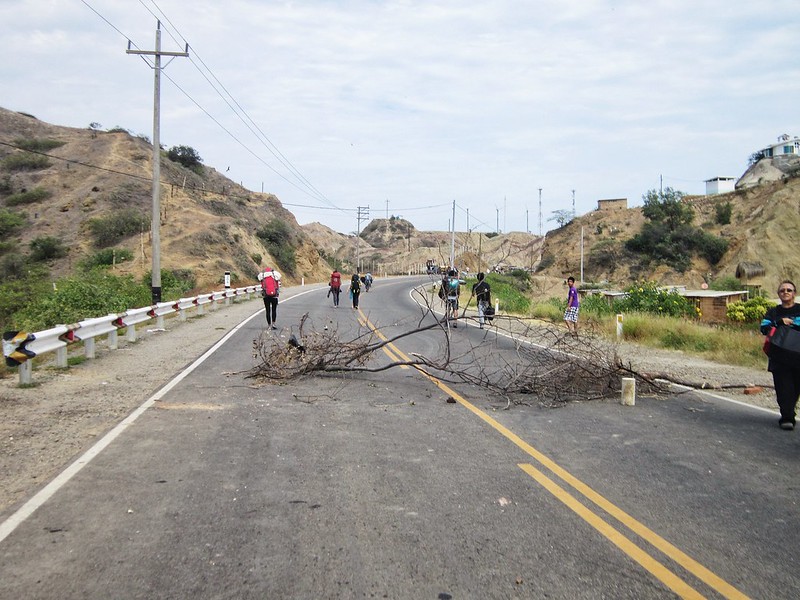
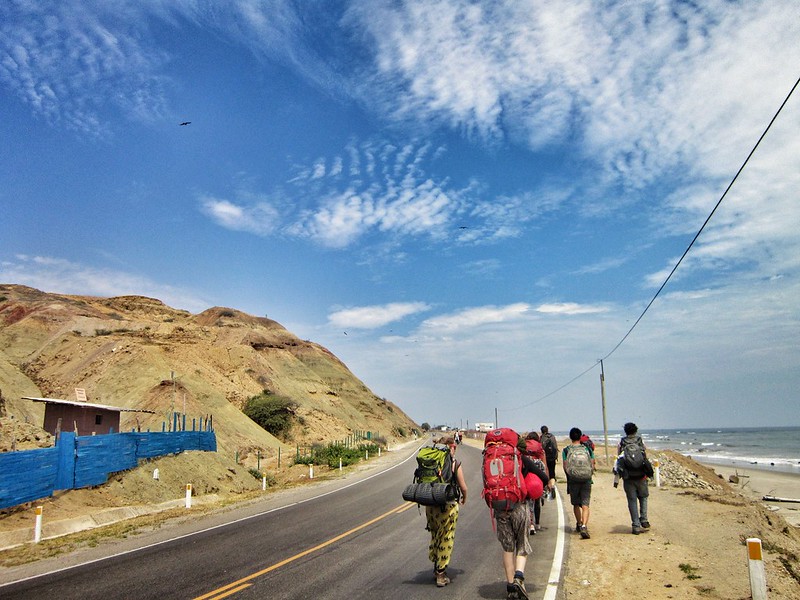
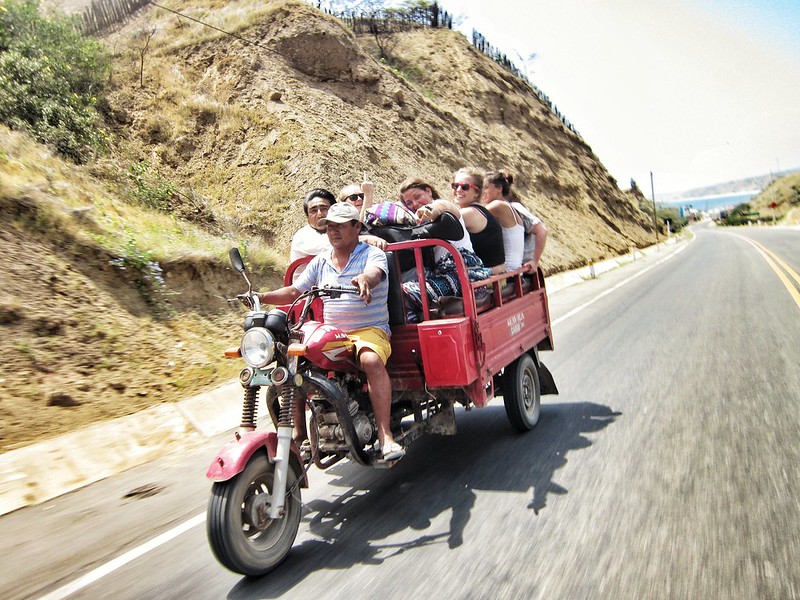
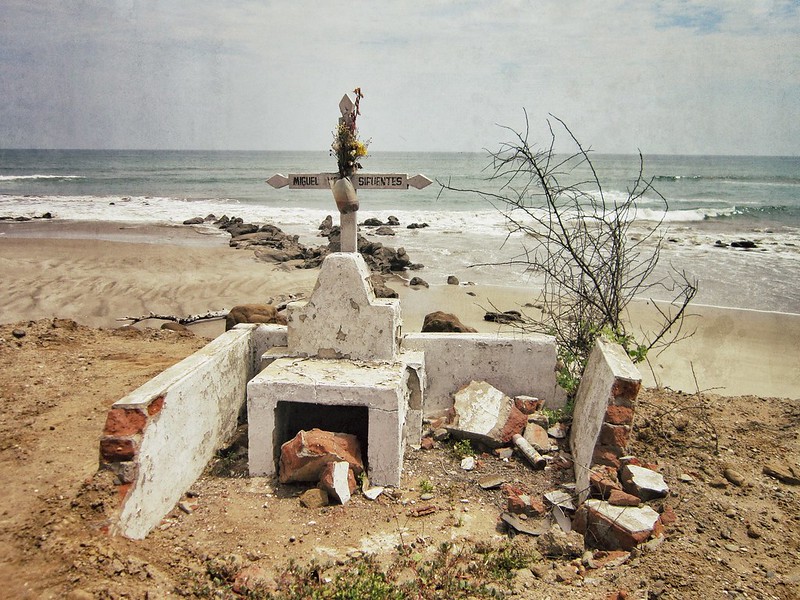
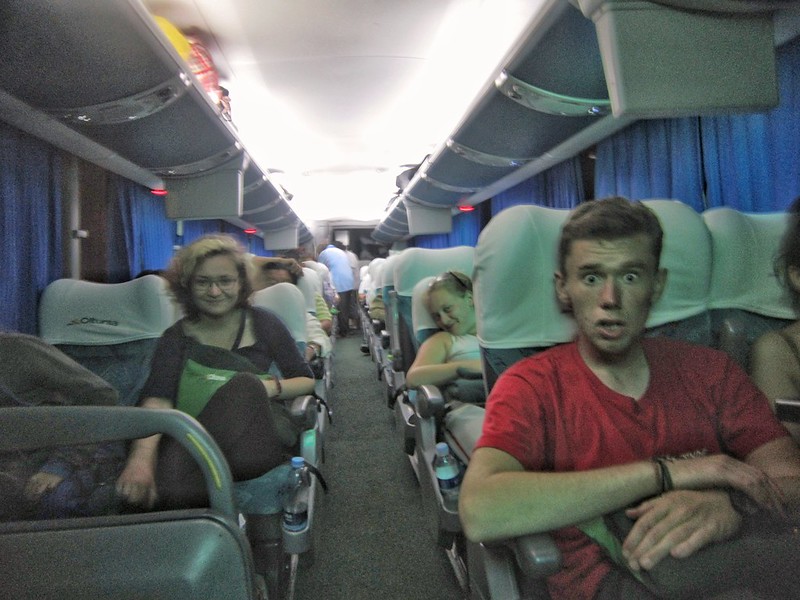
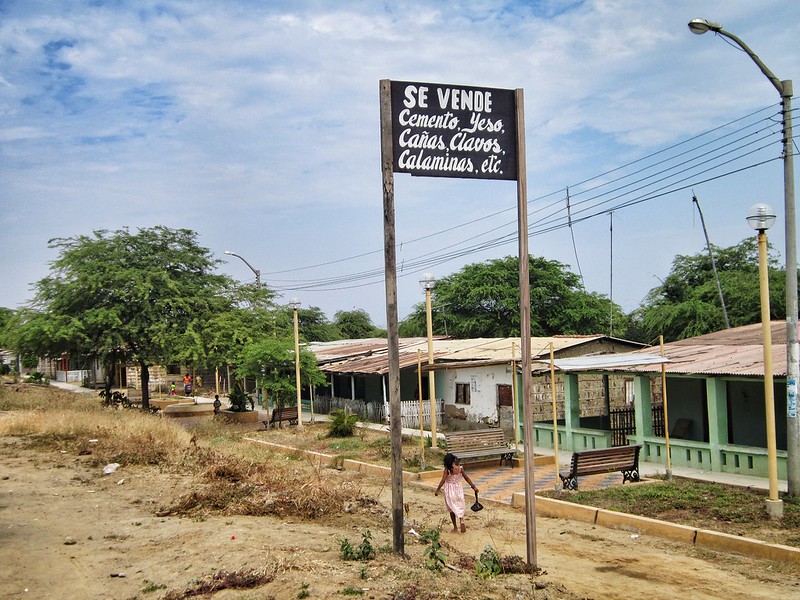
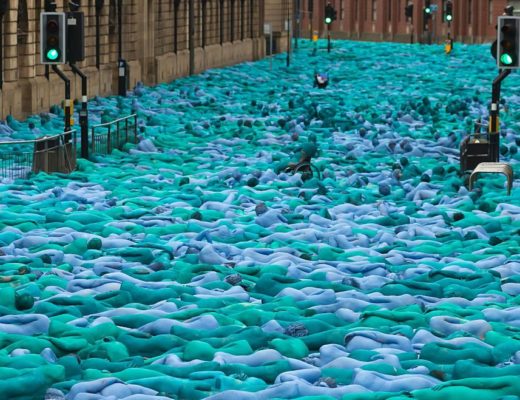
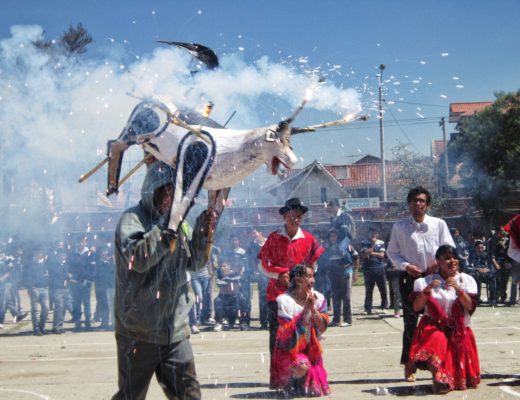
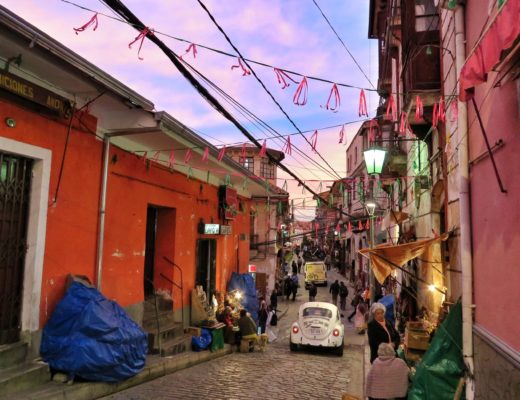
18 Comments
Britany
May 25, 2013 at 12:31 amThat all sounds pretty miserable but it’s a great example of backpackers banding together to get through these rough patches in travel. The generosity of other travelers always impresses me and you guys have a pretty bad ass story to share now! Very curious to hear how the rest of your time in Peru went…
Flora
June 6, 2013 at 8:15 pmOhhh the rest of Peru was incredible, but just as dramatic. Apparently that’s the way things go in South America :p Luckily the amount of positives have always managed to outweigh the negatives!
Kellie
May 25, 2013 at 11:19 amReally enjoyed the honesty of this. Travelling really does bring about the highs and lows of life, but its getting through these tough times that, I think, make it all worth it. Its great to hear how strangers all worked together to make the best of a bad situation. We’re headed to Central and South America at the end of the year and the experience you shared, strangely, made me excited. I’m looking forward to everything that travel has to offer both the amazing times and the hard times. I’ll look forward to hearing more about your time in Peru.
Flora
June 6, 2013 at 8:18 pmAnd that was my intention: to point out that, even though things like this can (and often will) happen, there’s more than enough to tempt you to this part of the world regardless 🙂 I’m sure you’ll have an incredible time in South America Kellie! Buen suerte 🙂
Brittany @ Paws for Beer
May 26, 2013 at 11:31 pmWow – sounds like quite the ordeal. I am glad it all worked out. It is always nice to hear about the kindness of others while traveling. Travel Karma!
Flora
June 6, 2013 at 8:17 pmTravel karma is my favourite principle to keep touting in times of hardship! It always works out in the end.
Dan Bibb
May 27, 2013 at 7:34 pmWow, what a welcome from the Peruvian people and the positive attitude of your reaction. So many times we could adjust our attitude to match the circumstances we find ourselves in, but the greater person rises above those that would want to do us harm and take advantage. Nicely done.
However, I am one to earn from others, so I think that when Linda and I go to Machu Picchu in August, we shall take a plane to Lima. haha. Thanks for the article.
Flora
June 6, 2013 at 8:43 pmI think a plane could definitely be a tad more drama-free! Glad you enjoyed reading it, Dan 🙂
The Salcantay Trek: What to Do When a Crazed Horse Breaks Your Collarbone
June 7, 2013 at 12:13 am[…] for a group of strangers to band together. Even after experiencing an element of the same when we crossed the Peruvian border, it was still amazing to watch various people construct a stretcher from walking poles and […]
Franca
June 7, 2013 at 11:04 amWow, such a crazy experience! It’s good to read though that all went for the best by the end, good job you moved along with other travelers, alone might have been a completely other story.
Flora
June 17, 2013 at 3:38 amI think the options would’ve been a lot fewer if I’d been alone! I probably would’ve had a very long day of waiting at the bus terminal until the barricades came down. But this way was infinitely more interesting – albeit somewhat of a struggle at times 🙂
Sam
August 29, 2013 at 4:14 pmWhen was this? My partner and I are in Lima now, and will be crossing the boarder to Peru at the beginning of October. It does sound kinda miserable, but I admire how you were able to see the best in the situatin!
Flora
September 6, 2013 at 12:25 pmThis happened around May, but I’ve no idea if its a common occurrence or not. My gut feeling would be to say it happens quite a lot… Whenever they can get away with it, perhaps?!
Ligeia
August 30, 2013 at 1:13 amBeautifully written and very engaging post. What an adventure! Sure sounds like they’ve got a good scam going on there.
I like how you counted your blessings at the end of it, realizing things could be worse. I always try to do the same. After all, it is a luxury to be able to complain about rough travel days and so I feel privileged to have them (although admittedly this is hard to do at the time and much easier after the fact).
And btw, I totally believe in travel karma too. 🙂
Stefania
September 7, 2013 at 5:40 pmWow, real adventures! I am fascinated by Peru…
Exciting Plans and a New Direction : Indefinite Adventure
September 14, 2013 at 5:11 pm[…] days by the beach before crossing the border to Ecuador, which hopefully it goes more smoothly than this. We’ll then pass through the south of Ecuador and spend several relaxing days somewhere fancy […]
El Camino de Santiago: I'm Walking 'The Way' Across Spain
February 9, 2015 at 7:13 pm[…] also spent two separate occasions walking along the blockaded highways of Bolivia and Peru carrying most of my possessions due to transport strikes and belligerent […]
So You Want to Volunteer in South America?
February 11, 2016 at 9:07 am[…] might be a broken collarbone caused by an errant horse; an unexpected transit strike leading to a day of hiking and heatstroke, or even papier mache animals covered in fireworks balanced precariously on a schoolchild’s […]